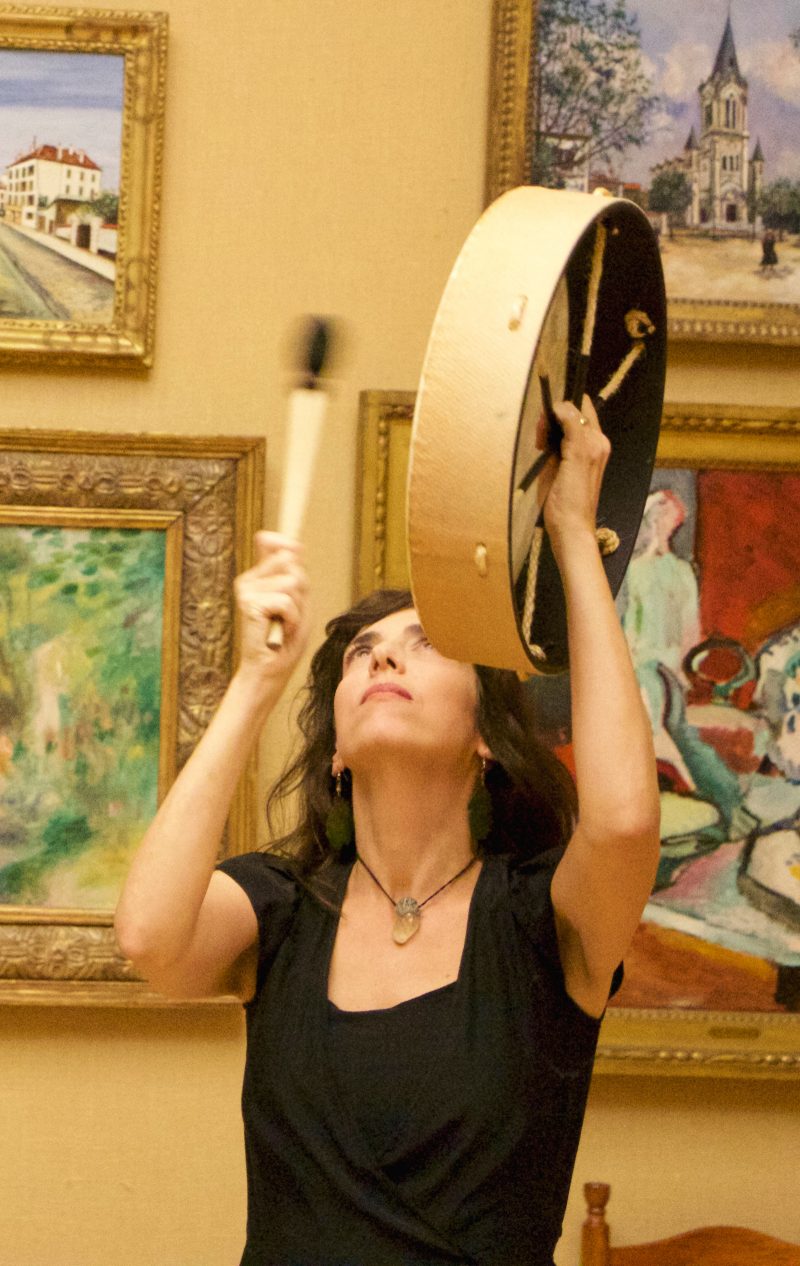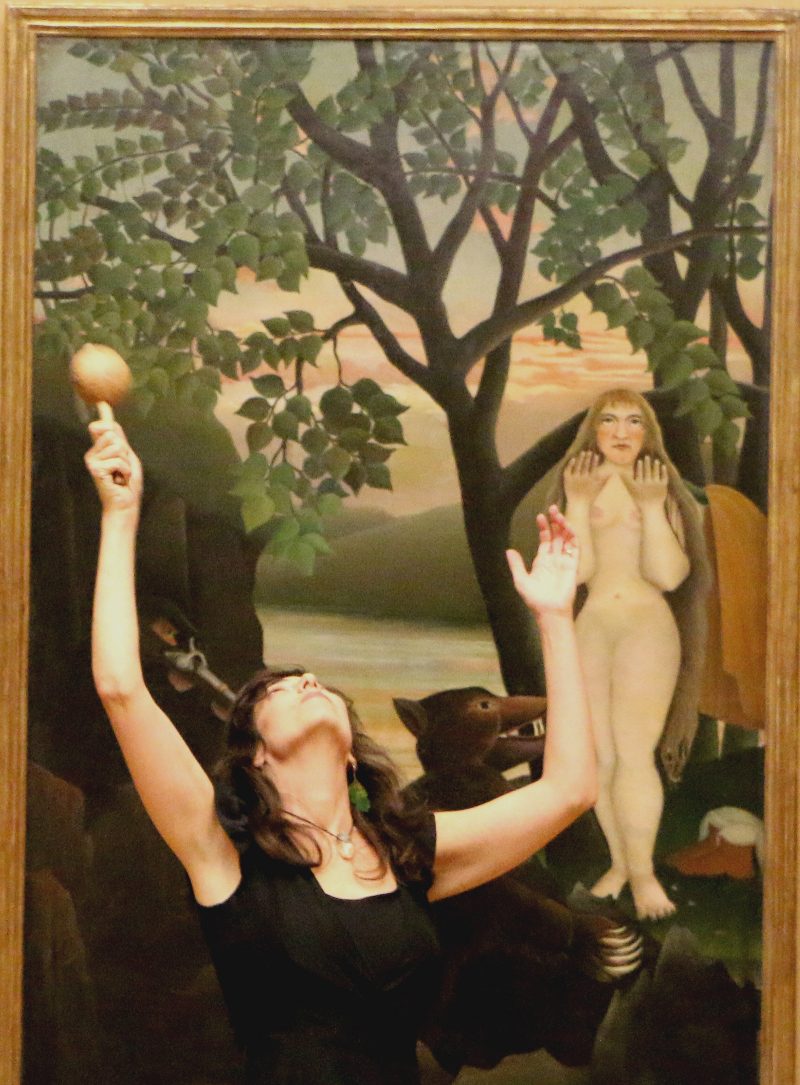You need a smartphone and a sense of humor to enjoy Andrea Hornick’s unconventional audio tour of the Barnes’ permanent collection (on “listen” until May 22).
Billed as a “sound intervention,” Unbounded Histories is a deeply personal, spiritual, and quirky response by an artist to Dr. Barnes’ own deeply personal and quirky collection of art. The museum commissioned Hornick, a Philadelphia-based performance artist and spirit guide (no, really), to create this piece. She spent long hours in the Barnes, using trances, drumming (but not so loud the vibrations would disturb the paintings!), and spiritual practices to connect with individual works of art. Hornick wants to take us on a voyage through the collection that is both physical and spiritual, asking us to participate in her own mystical and shamanic experience of the paintings and sculptures of the Barnes.

An audio guide for the spirit world
Hornick draws you through the collection, from first to mezzanine to second floor, speaking in a flat, affectless voice, almost like a the GPS device in your car–that alone is funny. But as you stop at the selected featured images in her tour–a Cézanne, a Seurat, a Picasso, a Renoir, a Rousseau–Hornick’s dry descriptions of composition and color transform imperceptibly into fantastical narratives and mystical reflections on the spirit world, although her voice remains unchanged.
As I walked and listened, I felt the edges of reality bend and blur–I saw the familiar paintings in front of me, but also the fanciful stories Hornick was telling me about rampaging bulls escaping from a Rose-period Picasso, or a farm-table dinner attended by Van Gogh and his iconic postman, Renoir and his portrait of his son Jean, and Manet’s portrait of a young girl. Hornick says that time is collapsed, individuals merged, in this mystical dinner party, and she wants us to join her there.

Let’s get metaphysical
I found Hornick’s unusual shamanic take on the Barnes most convincing when it was least heavy-handed, such as her humorous but sharply feminist take on Seurat’s bathers and Cézanne’s naked Leda who, says Hornick, are attending a tea party for “women with stultified expressions.” While much of what she says is only loosely based on what’s depicted on the canvas, sometimes she would sneak in an acute observation, such as her off-the-cuff comment that the pose of Cézanne’s “Young Man and Skull” recalls the classic pose of the penitent Mary Magdalene, the redeemed prostitute and close friend of Christ. This injects a note of gender ambiguity that enriches the experience of viewing the painting, rather than leading away from it on an imaginative tangent.
On the mezzanine level between the first and second floors, Hornick gets even more metaphysical. Calling it a literal “middle world,” her voice directs me to look at a late medieval statue of the Virgin Mary and Christ Child, juxtaposed with a woven Navajo blanket, and a 9th-century fertility bust, “symbols of Mother Earth from three belief systems.” She highlights women’s powers of creation, which she connects to Dr. Barnes’ own act of creation through collection–”we create as we see; proceed with galleries with authority.”

Hornick’s tour seems to conclude in room 23, which houses Henri Rousseau’s monumental “Unpleasant Surprise.” I say “seems to” because there is no clear start or end to this audio performance. But here, for the first time, Hornick overtly inserts herself and her animal spirit guide into the narrative–”I and my brown bear encounter her in lake as she plays with bear that she courts as possible spirit guide.” This is deeply serious for Hornick, and I could feel the sincerity of her intent as she described a vision of Rousseau’s woman transforming into a “vessel rising up, double helix through lake into ethers.”
When Hornick’s voice abruptly fell silent, marking the end of her journey through this room and the museum as a whole, I was left with mixed feelings. I enjoyed her irreverent humor, her questioning of who gets to speak for and about art, but I found the spiritual and shamanic aspects more difficult to embrace. I wish I could have experienced more of her own process–seeing her in a trance state, with the drumming and chanting–to help me get in the spirit (so to speak) of the world she describes. The recorded performance can only hint at the intensity of full immersion in Hornick’s spirit world. But the concept of a sound intervention does offer a creative way for contemporary artists to engage with the permanent collection of the Barnes, with its static, unchangeable ensembles. Who knows–perhaps the famously idiosyncratic Dr. Barnes would appreciate Hornick’s unorthodox and decidedly non-art-historical take on his collection.
Andrea Hornick’s Unbounded Histories has been extended through May 22 at the Barnes Foundation. You can access her audio guide online.









